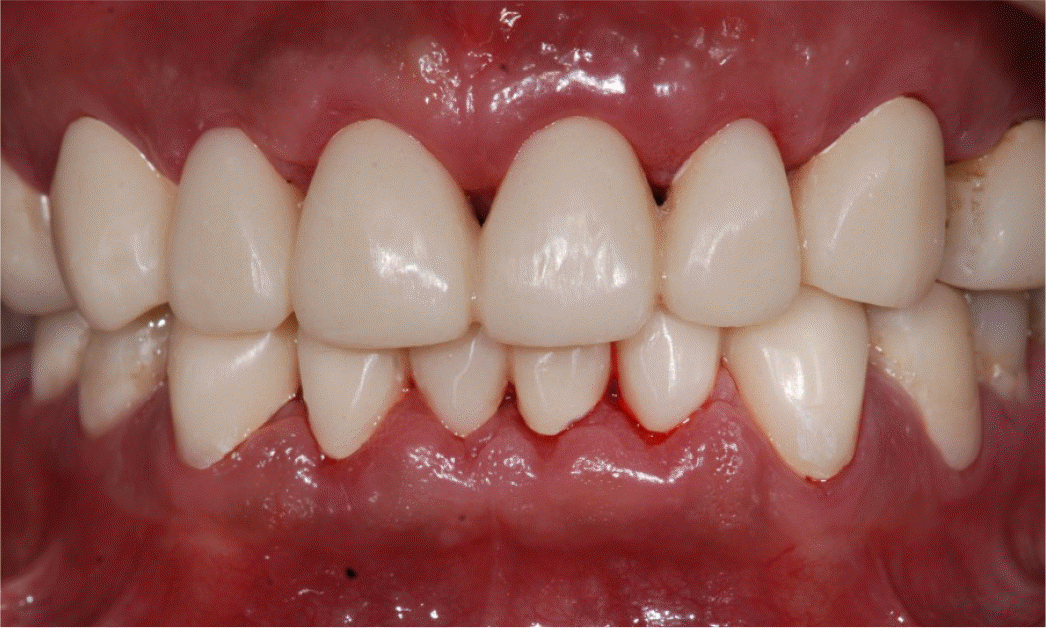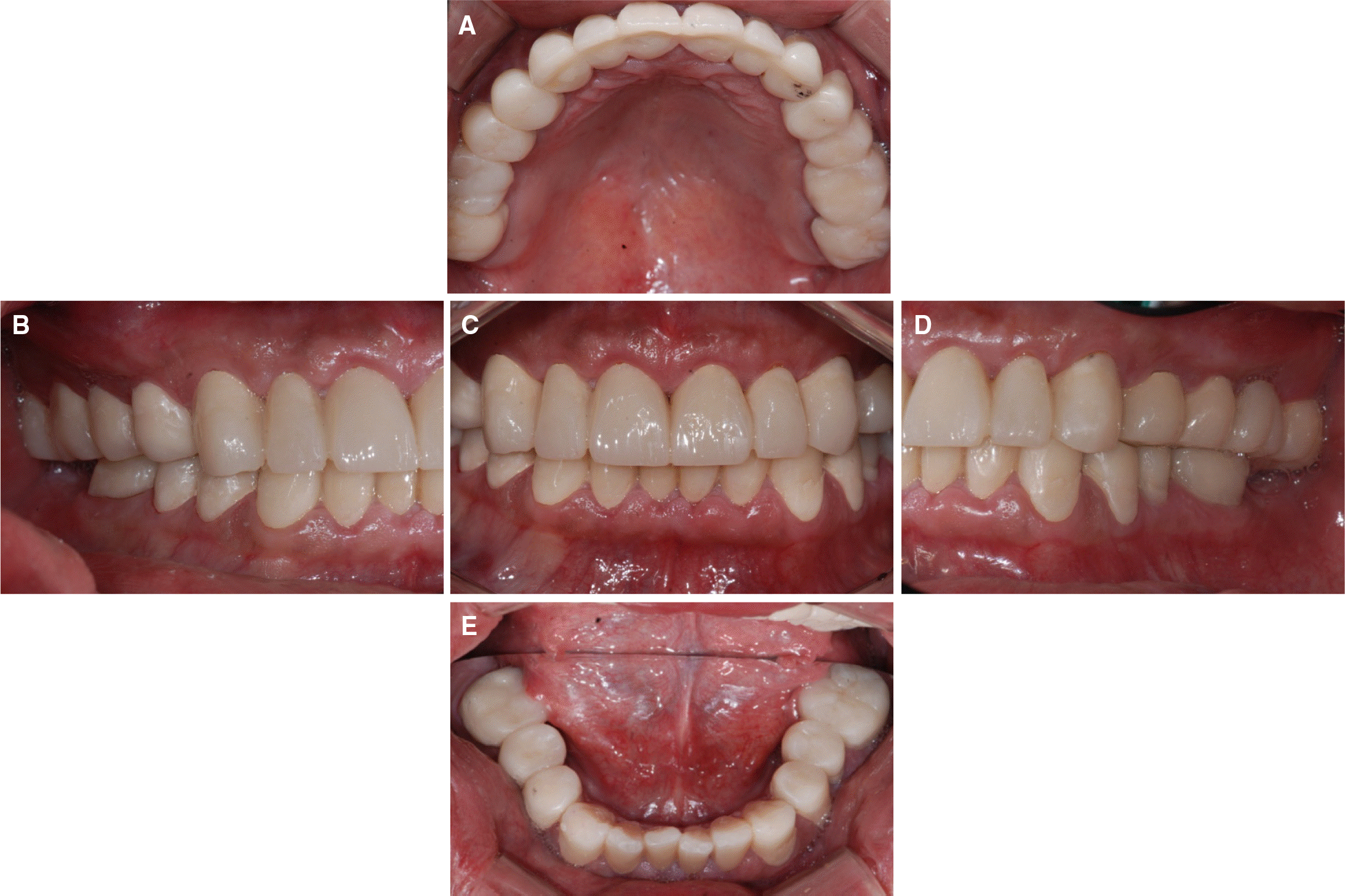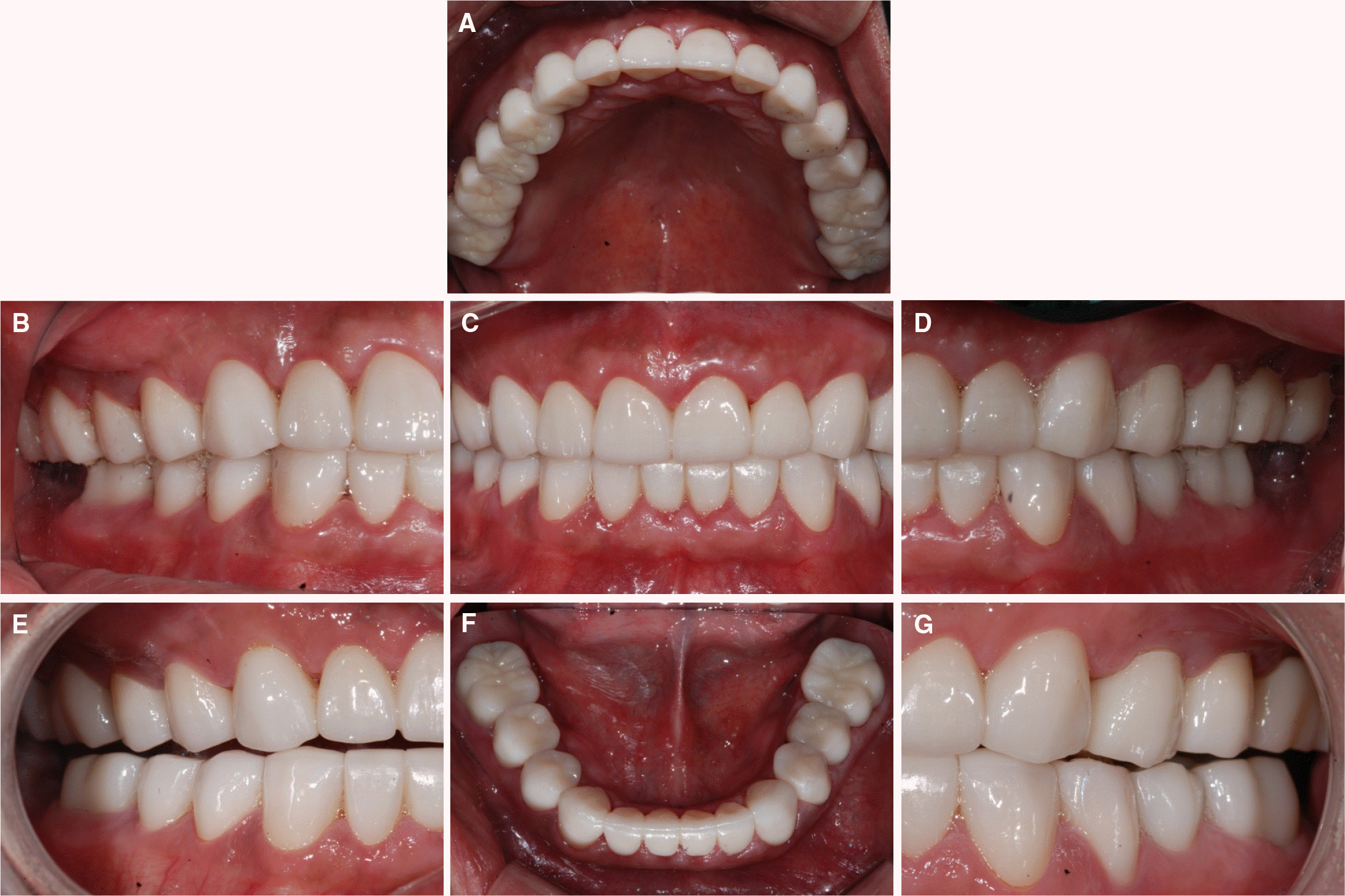Abstract
Excessive occlusal wear causes loss of tooth structure, occlusal plane disharmony, impaired function and esthetic problems. Although the decrease of occlusal vertical dimension may be compensated by the growth of alveolar bone and tooth eruption, minimal increase of occlusal vertical dimension may be required for esthetics and retention of prosthesis. In this case, a 44-year-old male patient visited Seoul National University Dental Hospital with chief complaint of severe tooth wear and shade disharmony. Based on assessment of diagnostic wax-up, 3 mm increase of occlusal vertical dimension was determined. Removable occlusal splint and interim prosthesis was used to ascertain patient's comfort and adaptation. After the adaptation period, definitive prosthesis fabricated with full-contour monolithic zirconia were delivered and the patient was recommended to wear a nightguard device for prosthesis protection. This report presents a case of full mouth rehabilitation with the elevation of patient's occlusal vertical height, resulting in satisfactory esthetics and functions. (J Korean Acad Prosthodont 2016;54:140-5)
Go to : 
REFERENCES
1.Verrett RG. Analyzing the etiology of an extremely worn dentition. J Prosthodont. 2001. 10:224–33.

2.Turner KA., Missirlian DM. Restoration of the extremely worn dentition. J Prosthet Dent. 1984. 52:467–74.

3.Briggs P., Bishop K. Fixed prostheses in the treatment of tooth wear. Eur J Prosthodont Restor Dent. 1997. 5:175–80.
4.Hemmings KW., Darbar UR., Vaughan S. Tooth wear treated with direct composite restorations at an increased vertical dimension: results at 30 months. J Prosthet Dent. 2000. 83:287–93.

5.Berry DC., Poole DF. Attrition: possible mechanisms of compensation. J Oral Rehabil. 1976. 3:201–6.

6.Ramfjord SP., Blankenship JR. Increased occlusal vertical dimension in adult monkeys. J Prosthet Dent. 1981. 45:74–83.

7.Dawson PE. Functional occlusion: from TMJ to smile design. St. Louis; Mo: Mosby;2007. p. 430–52.
Go to : 




 PDF
PDF ePub
ePub Citation
Citation Print
Print







 XML Download
XML Download